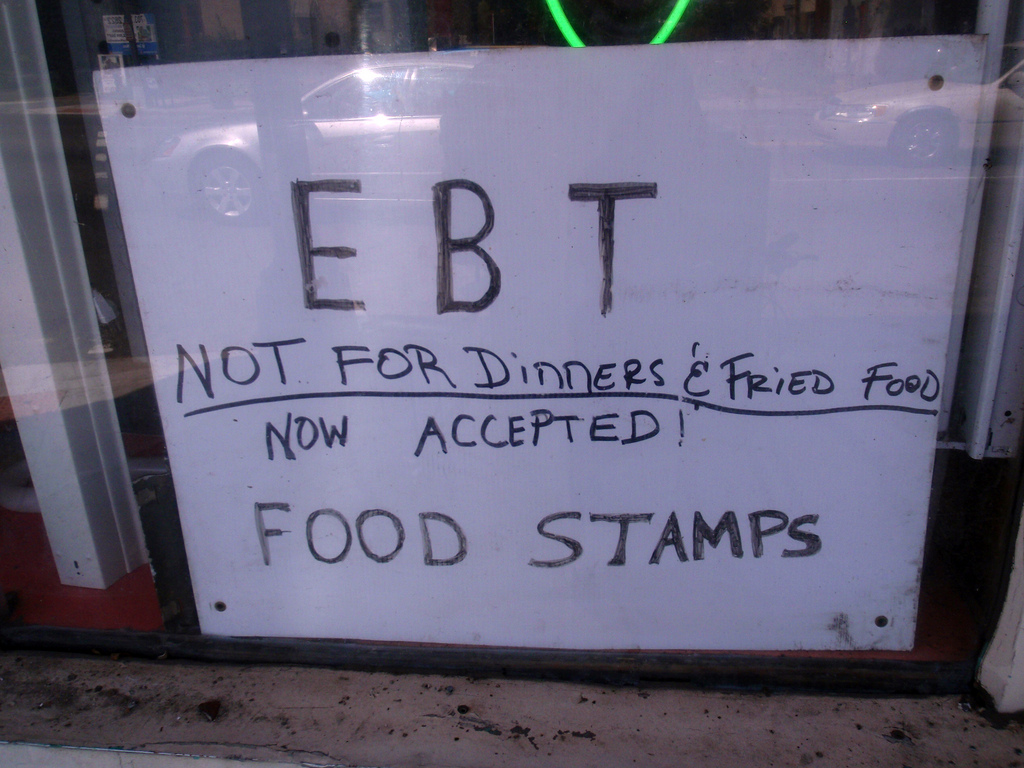Food insecurity is on the rise as state benefits have decreased and the future of federal benefits have an uncertain future.
Sonya Warwick, director of communications and events for the Albuquerque-based Roadrunner Foodbank, told NM Political Report that there are multiple reasons why the food bank is seeing an increase in hunger in the state. Roadrunner Foodbank has operations in nine other areas of the state, including Las Cruces.
Warwick said it’s a combination of SNAP benefits returning to pre-pandemic levels of funding shortly before the COVID-19 public health emergency ended last year and the effects of inflation on food costs.
“We’ve had people in food lines [since the pandemic ended] because food costs are high. They can’t afford everything they’d typically buy for groceries, whether they’re on SNAP benefits or have small grocery budgets,” she said.
Lorenzo Alba, executive director of Casa de Peregrino, a Las Cruces-based food bank, attributed the biggest reason for the growth Casa de Peregrino has seen of hungry families in the southern part of the state to inflation.
He also said Casa de Peregrino has received aid from both Doña Ana County and the city of Las Cruces to help offset the nonprofit’s costs to feed the food insecure. But, Alba said he doesn’t see a lot of that kind of support from other municipalities in the region for other food banks. He said Casa de Peregrino received more than $350,000 from both the city and county last year.
He said more infrastructure is needed to better serve those who are food insecure.
In the early months of the COVID-19 pandemic, state and federal efforts to bring relief to people under additional strains from the pandemic led the federal government to increase SNAP benefits to help the most vulnerable obtain food.
But, the SNAP benefit increase stopped last year just before the end of the public health emergency.
A spokesman for the New Mexico Human Services Department said through an email that the department is “keenly aware of the issues New Mexico faces when it comes to nutrition and food insecurity.”
Timothy Fowler, HSD public relations coordinator, said in the email that the department requested and received funding from the legislature to bolster and expand SNAP programming.
He said to offset the food insecurity issues, HSD provides a supplement to SNAP benefits for seniors and those who are disabled, which benefits 26,451 households with $25 to $100 additional benefits monthly.
He said the state expanded SNAP eligibility to 200 percent of the federal poverty level. Previously, the eligibility requirement was 165 percent of the federal poverty level.
Fowler said this enables 67,697 households to access SNAP benefits. He said, in addition, a program known as SUN Bucks, or Summer EBT, provides about 253,000 eligible K-12 students with $120 grocery benefits during the summer.
But some uncertainty looms with federal benefits.
The extension on the five-year 2018 omnibus Farm Bill is set to expire this year. Congress is trying to pass a 2024 Farm Bill but disagreements between Democrats and Republicans suggest more work is to be done before a bill can pass.
Federal assistance through SNAP comes through the Farm Bill. Those federal benefits, without an appropriations act or a resolution to continue operations, would sunset on September 30 of this year.
The Congressional Budget Office projected, prior to the 2018 Farm Act, that the U.S. would spend $428 billion over the five-year period and that nutrition programs make up three-fourths of this amount.
Feeding America, a national nonprofit, provides an interactive map that shows findings on food insecurity state-by-state from 2022 to 2017, as well as national trends. In 2017, there were 324,000 who were food insecure in New Mexico. Of the 324,000 food insecure, 70 percent were below the SNAP benefit threshold of living 165 percent below the poverty level. In 2017, Feeding America estimated New Mexico needed an additional $158 million to meet all of the state’s food needs.
In 2022, the population of food insecure was down slightly. There were 321,370 food insecure individuals in New Mexico, according to Feeding America. But the cost of feeding them increased to $224 million.
According to the USDA Economic Research Service, food prices increased by 9.9 percent in 2022 and that is faster than any previous year since 1979. In 2023, food prices increased another 5.8 percent, the USDA Economic Research Service reports.
In March and April of this year, food prices decreased and were lower in April 2024 than in April 2023 for eggs, fish, seafood, dairy products and other meats. But currently, prices are predicted to increase in 2024 for most grocery categories, according to the USDA.
Alba said that Casa de Peregrino recently built a new food pantry that is 13,000 square feet in Las Cruces to better serve the needs of the food insecure in the state’s second most populous city.
The state provided $5 million through capital outlay funds for the building, but the organization needed an additional $3.from the city of Las Cruces to complete the construction.
Alba said that the pandemic affected the design, even though the new building was planned before the pandemic. The new building has a drive-up window in the event of a future pandemic. The new building also has a large loading dock area so semi-trucks can deliver large quantities of food and load-in seamlessly and state-of-the-art refrigeration units were installed to house large quantities of perishables.
Alba said Casa de Peregrino is working on a second project using capital outlay funds. The planned building is in Chaparral, where he said there is a high need because it is a very poor part of the state. Another is also planned for Sunland Park, another location with high poverty, he said. Casa de Peregrino is also finishing the construction of a brick-and-mortar food pantry in Hatch to replace a mobile food pantry unit. The new building is already open to serve families, he said.
Alba said the mobile food pantry unit fed 175 families in Hatch but the brick-and-mortar food pantry now serves 500 families.
Alba said the reason for the difference is that the mobile unit could only be in Hatch once a month and wasn’t there when people got off work. Now with the new building, Casa de Peregrino is open for a few days each week and is open after farm workers leave the fields.
Alba said that in the first quarter of 2023, the organization served 11,918 baskets of food to families but a year later, during the first quarter of 2024, Casa de Peregrino served 15,015 baskets of food. That is a 22 percent increase, he said.
In addition to inflation hitting families’ grocery budgets, Alba said it’s also hitting food banks, too. He said the state provides $5 million each fiscal year to food banks to help them meet the needs of the state’s hungriest. But that number hasn’t changed in recent years, even as the cost of food for food banks has risen while, at the same time, food banks see an increased need.
Fowler confirmed the $5 million amount but pointed to the ways the HSD has sought and received approval for the state programs, which amounts to an additional $15,759,800, in state funding, according to the HSD email.
The stalled out 2024 Farm Bill could impact food banks as federal assistance to food banks also comes through the legislation, Alba said. Last month the House of Representatives Agriculture Committee passed a $1.5 trillion Farm Bill but with few Democrats on the committee voting for it. U.S. Rep. Gabe Vasquez, representing New Mexico’s 2nd Congressional District, was one of the Democrats who voted against it.
Democrats in the House of Representatives don’t support the Republican-led bill because, in part, it would change the formula the federal government uses to calculate SNAP benefits over a five-year period.
“Under House Republicans’ partisan plan, hungry families in New Mexico would have their benefits cut by $340 million. That is unacceptable,” Vasquez said through a press release.
The U.S. Senate has its own version of a farm bill led by a Democrat, Michigan Senator Debbie Stabenow, who chairs the Senate Agriculture, Nutrition, and Forestry Committee. New Mexico Senators Martin Heinrich and Ben Ray Luján, both Democrats, issued statements in support of her bill when Stabenow released it in early May. Stabenow’s bill would protect SNAP benefits.
Warwick said the funding Roadrunner Foodbank receives through state and federal aid helps but the majority of the organization’s funding to obtain food comes from individual donors.
Warwick said the summer months can be hard on families who are food insecure because, with school out, their children can’t access school lunches. She said, on average, individuals who rely on food banks for help need it only some months in the year.
“They come in and out of food insecurity,” Warwick said.
































